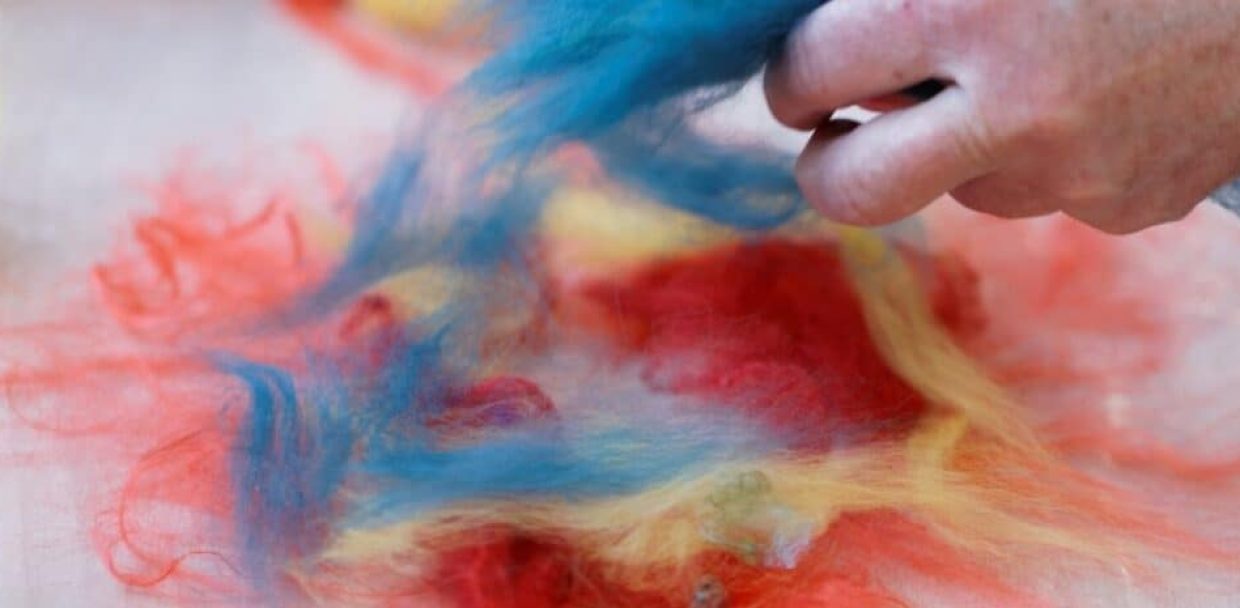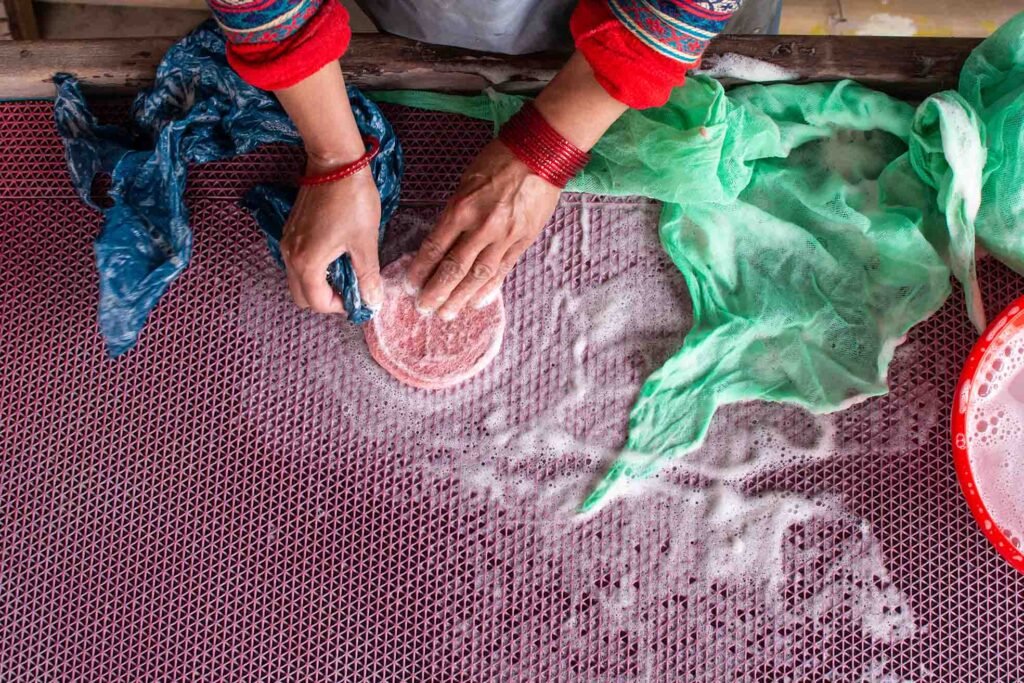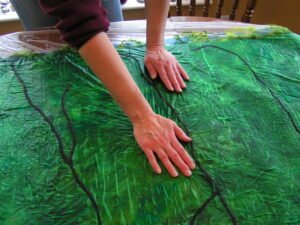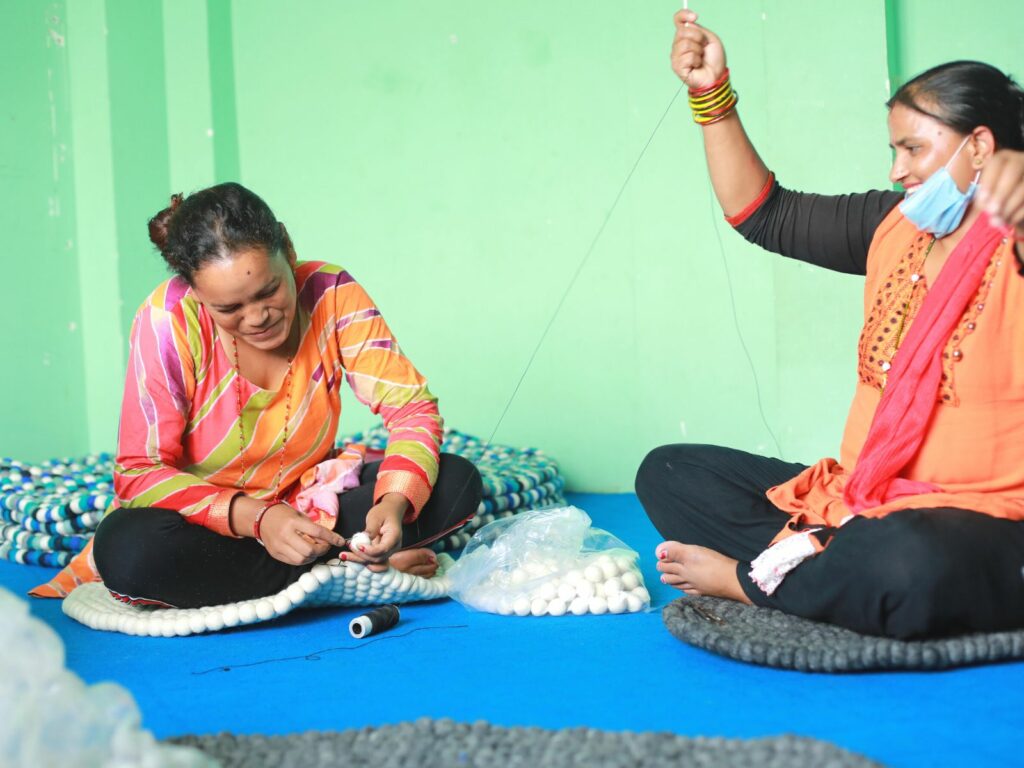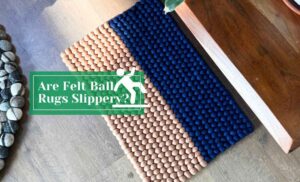Felting is very versatile. You can apply different techniques to make your beautiful felted creation. There is basic wet felting, Nuno felting, cobweb felting, needle felting, and more. You don’t need to stick with a particular felting method, you can explore yourself and see what fits your interest. Now the common question that arises is that,
What is the difference between wet felting and Nuno felting?
Knowing the concept of felting is not too difficult, but when you start to learn and explore other known techniques, it starts to get confusing. Many people who are new to the felting world, are confused between these two techniques. Here we are going to help you clear your confusion. First of all let us know what these felting techniques generally mean.
Wet felting
Wet felting is one of the oldest methods of felting. This method is still widely practiced. In this method, the wool is placed on a flat surface and warm soapy water is applied for moisture then you apply agitation to your felting project using rolling, pressing, and squeezing motion. This causes the wool to felt into sheets and they are further used for making other useful things. They are used for making coats, hats, or shaped during the felting process into baskets, bowls, and shoes.
Nuno Felting
Nuno felting is one of the felting methods combined with wet felting techniques. This was later introduced by a fiber artist named Polly String for Australia. She invented this creative idea of felting wool into other light fabrics to create light flowy creations. This technique is widely used for creating beautiful designs and textures on silk scarves, shawls, etc.
Differences between Wet felting and Nuno felting
Here we are going to look at the differences between Wet felting and Nuno felting on different aspects.
History of origin
Wet felting is the oldest method of felting. The exact date that the felting was originated is still unknown but it is believed to date back to prehistoric times in Central Asia. Someone might have the idea of making matted fabric after watching the phenomena of sheared wool being matted itself during the wet and cold seasons. During those times felt acted as a great insulator and was used for making shelter coverings, clothes, lightweight shields or armors, hats boots, and many more.
Nuno felting was later adapted the felting technique. It was developed by a fiber artist named Polly Stirling who was born in Australia. She worked together with her assistant Sachiko Kitaka to develop this technique. This technique was developed with the motive of making felt suitable to be worn during warmer seasons. This technique combines other lightweight fabrics with the felt to make a lightweight result.
Materials and Technique
In wet felting, we only use wool or other natural fiber of the same properties. It can be of any color. They are felted using soapy water and hand friction is applied to felt the wool.
In Nuno felting first sheer materials like silk, chiffon is placed on the felting surface then small bits of wool are added according to the designs. They start felting after applying soapy water and friction from the hand. Sometimes to create a bit heavier feel to the fabric, the sheer material is placed between light layers of felting fiber.
Water Temperature
In the wet felting method, hot water is used during the felting process. Hot water helps relax the fiber which encourages fast interlocking of the materials. The hot water also shrinks the fabric which makes the fabric felt nice and is bonded strongly.
In Nuno felting, cold water or room temperature water is preferred over hot water. Since we will be working with different types of fabric, cold water slows down the felting process which ensures that the wool gets enough time to felt with the cloth you are working on. If the wool felts fast then there won’t be enough time for the cloth and the wool to incorporate properly.
Skill Requirement
The wet felting technique is easy to learn. If you are a beginner then with few basic knowledge you can learn wet felt easily. You can either learn the steps by reading the articles on how to felt or also watch YouTube videos if you learn through observation. You can develop your skill gradually by attempting different projects.
Nuno felting is rather complicated than wet felting. If you are a beginner then we do not recommend you to start by learning this technique. You have to work with different fabrics which can be frustrating for beginners and may leave a bad impression on making it a hobby. This technique also takes a long time to master.
Final Result
Both techniques give different results. In wet felting, we are looking for a matted stiff, durable sheet of fabric. This method is typically used to create flat-shaped projects like slippers, vests, toys, and 3D figures as well. The wool is uniformly felted in all places preventing any holes or gaps.
On the other hand, Nuno felting is done for creating flowy, light clothing items suitable for warmer seasons. It is used to make shawls, skirts, dresses, and airy wall hanging for home décor.
Although Nuno felting is a wet felting technique itself. The process is a bit different compared to the basic wet felting method. The result is also different and the materials used for both process is also different. The skill required to do both techniques is also different. One is the oldest method whereas the other is a new adapted technique.
Visit woollyfelt.com for all kinds of handmade felt wool products made from 100% pure wool.

